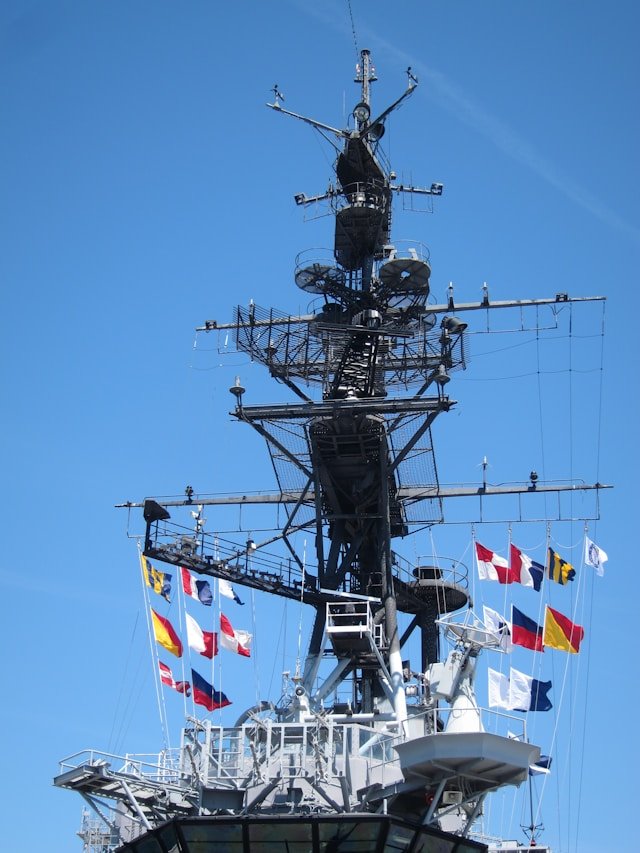Nautical flags and boat signs
are vital elements in the maritime communication system essential for navigation. They facilitate message exchange between vessels and between ships and shore, which is crucial for ensuring safety and efficiency on the water. This article will explore the history, types, and applications of nautical flags and boat signs, providing insight into their significance in maritime activities. Used in various situations—ranging from routine operations to emergency scenarios—these visual symbols enable seafarers to relay important information swiftly and clearly, even when verbal communication is hindered by distance or environmental factors.
The Historical Development of Maritime Signaling
The practice of using flags for signaling at sea dates back centuries, providing a means for ships to communicate over long distances before the invention of radio technology. These early signals were relatively simple but developed into a more complex system capable of conveying intricate messages. Nowadays, the International Code of Signals (ICS) is widely recognized and utilized, enabling vessels of diverse nationalities to exchange crucial messages without language barriers. Historical evidence indicates that the first forms of maritime communication comprised basic colored flags, gradually evolving into a sophisticated system that addressed the numerous navigational and safety challenges ships encounter globally.

Decoding the International Code of Signals
The International Code of Signals consists of a variety of flags, each symbolizing a letter in the alphabet along with a set of standardized messages. Every flag has a distinctive shape, color, and symbol representing a specific letter or instruction. When combined in sequences, these flags are able to convey detailed alerts, directives, and other essential information. Familiarity with these signals is crucial for individuals navigating or operating a maritime vessel. This system’s comprehensive nature facilitates accurate communication, minimizing misunderstandings that could result in accidents or navigational mishaps.
Categories of Nautical Flags and Their Significance
Nautical flags are categorized into several groups, including alphabetical flags, numeral pennants, substitute flags, and specialized signals like distress indicators. Alphabetical flags convey messages through spelling, while numeral pennants relate to numbers, dates, or times. Substitute flags allow for the repetition of letters in messages without the need for additional flags. Knowledge of each flag’s significance and appropriate usage is critical for effective communication. These flags serve as not just communication tools but also as reflections of maritime history and tradition, each embodying a distinct and universally accepted meaning that transcends language.
Modern Applications of Nautical Signs and Flags
In addition to traditional nautical flags, contemporary vessels employ various signs for ensuring safety and adherence to maritime regulations. These include draft markings, hull identification signs, and capacity indicators, which communicate information on the vessel’s weight limits and identification particulars. Additionally, regulatory signs such as no-wake zones and speed limits contribute to safe navigation in diverse marine regions. Such modern applications enhance traditional flag systems and aid in managing the increasingly busy and regulated maritime routes.
Nautical Flags and Safety at Sea
Ensuring safety is a fundamental aspect of maritime navigation, and nautical flags play a crucial role in safety communications. Specific flags signal man-overboard situations, hazard warnings, or requests for assistance. For example, the Alpha flag shows that a diver is in the water, indicating that boats should proceed slowly and stay clear, while the November Charlie flags together relay a distress message. These flags are vital for promoting safety at sea, offering clear and immediate communication in critical situations where time and clarity are essential.
Environmental and Regulatory Compliance through Boat Signs
Boat signs also encompass labels and placards mandated by maritime regulatory agencies, such as those denoting oil discharge prohibitions or waste management practices. These signs aid in ensuring compliance with environmental regulations, prevent pollution, and foster sustainable practices in marine environments. This aspect of maritime signage is increasingly crucial as governments and international organizations prioritize protecting the environment.
Navigational Obstacles and the Role of Flags
Navigational challenges on the water, such as limited visibility, congested sea lanes, or intricate port entrances, often require clear communication facilitated by flags. For instance, during regattas or in harbors, specific flags may guide vessels, signal race statuses, or provide operational directions, thus reducing the likelihood of accidents and misunderstandings. Strategically employing these flags can significantly improve safety and effectiveness in congested or demanding marine environments.
Cultural Significance of Nautical Flags
Beyond their functional use, nautical flags carry cultural importance within maritime communities. They’re often displayed during ceremonies and celebrations, with their colors and patterns symbolizing various maritime traditions. Specific flags are hoisted during ship commissioning, decommissioning, or national events to mark these occasions, representing the rich heritage and customs of seafaring cultures. This cultural dimension enriches the understanding of nautical flags, connecting them to both practical applications and ceremonial traditions.
Integrating Technology with Traditional Signaling
As technology progresses, the integration of traditional nautical flag signaling with modern technological tools is becoming increasingly common. Digital signaling systems, GPS, and other navigational aids work alongside traditional flags to improve communication clarity and reliability. This combination of old and new technologies ensures that maritime communication remains robust and adaptable to evolving conditions. Furthermore, technology facilitates more effective training for new sailors, providing simulations and virtual settings where they can grasp the significance and correct usage of nautical flags before applying their knowledge in real-world contexts. This technological evolution preserves the longstanding traditions of maritime signaling while modernizing them for heightened safety and efficiency in maritime operations, enabling real-time communication and improved decision-making capabilities on board. It effectively bridges historical practices with contemporary demands in maritime navigation.
In conclusion, nautical flags and boat signs are not merely communication tools but integral components of maritime tradition and safety regulation. Their usage today, deeply rooted in centuries of maritime history, remains essential for safe and efficient sea travel. A thorough understanding and appropriate application of these signals can significantly enhance navigational safety and operational effectiveness, maintaining order and safety on the seas. As maritime activities continue to expand, the importance of these communication tools remains clear, emphasizing the need for ongoing learning and adherence to established signaling conventions.
About Outoftownblogs
Be sure to check out all posts by Outoftownblogs and subscribe via RSS or EMAIL so you don’t miss anything!





